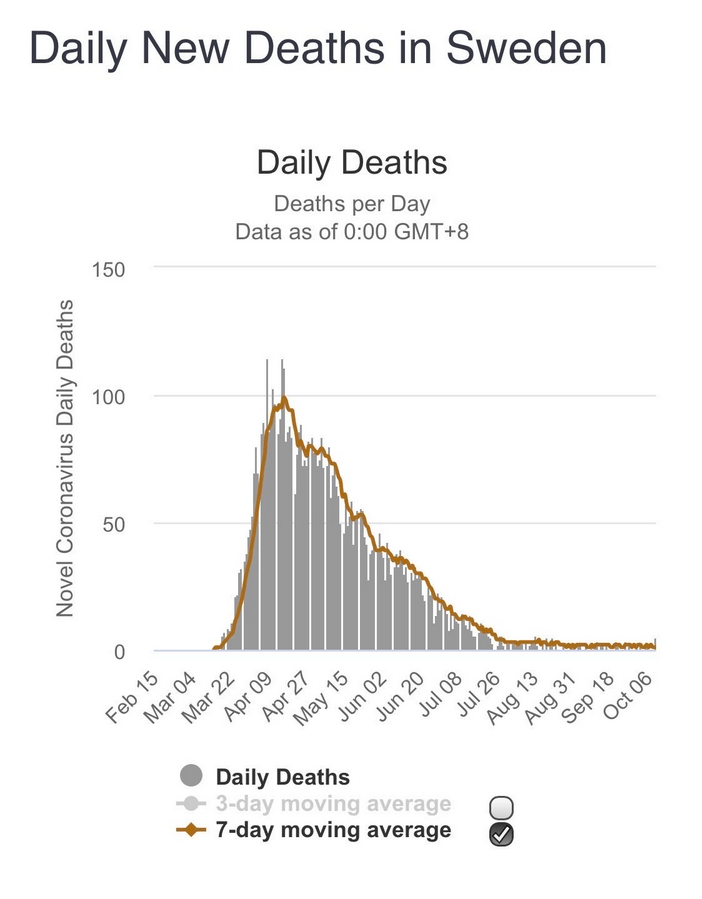
One thing our media is quite adept at is portraying the status quo as an experiment and an experiment as the status quo. Consider COVID-19 policy. Herd-immunity strategy is characterized as some untried, dubious theory even though it’s the standard way of dealing with respiratory pandemics. In contrast, wide-scale lockdowns are treated as standard even though they’d never before been imposed and thus have no track record whatsoever. Given this, a new study’s findings are perhaps not surprising.
To wit: Closing schools has delayed herd immunity and, for this reason, could lead to more death.
As LifeSite news reports:
Researchers from the University of Edinburgh reevaluated a model produced by the Imperial College London earlier this year that prompted the extensive government lockdown measures, including the closing of schools, implemented in the U.K., as reported by The Sun.
Considering the question of how such school closings would impact the spread of the virus, the study found that “school closures and isolation of younger people would increase the total number of deaths, albeit postponed to a second and subsequent waves.”
Though the lockdowns were “highly effective at reducing peak demand for intensive care unit (ICU) beds,” the researchers explain, these measures “also prolong the epidemic” by preventing the virus from naturally moving through low-risk populations and building herd immunity which then serves to protect the vulnerable, including the “older age groups.”
To this end, the study also shows that limiting social distancing to those over 70 would be more effective at reducing the number of deaths than the general social distancing of the entire population.
The researchers thus conclude that “the somewhat counterintuitive results that school closures lead to more deaths are a consequence of the addition of some interventions that suppress the first wave and failure to prioritise protection of the most vulnerable people.”
This not only isn’t hard to understand, but was explained at The New American and elsewhere many months ago. It’s not just that closing colleges meant sending young people back home, where they could perhaps expose older and more vulnerable relatives to the China virus.
It’s also that, as Dr. Knut Wittkowski, former long-time head of the Department of Biostatistics, Epidemiology, and Research Design at the Rockefeller University in New York City, pointed out in early April, the problem with “flattening the curve” is that you also “widen it.”
In other words, you prolong the inevitable.
As with herd immunity, this opinion is no anomaly. Just consider Emily Gurley, associate scientist in the Department of Epidemiology at the Johns Hopkins Bloomberg School of Public Health. The liberal Atlantic quoted her as saying in February, “Most people are going to get this virus at some point.”
And that point, the point is, should not be delayed.
One issue: You may be able to get the elderly and vulnerable to isolate themselves for a few weeks to a couple of months. But extending this for six months, a year, or more is unrealistic. Not only isn’t it good for people’s mental and physical health, but, inevitably, their discipline and diligence will start to wane. They’ll get sloppier.
The bottom line is that the longer you keep a respiratory disease in the population, the more chances the vulnerable have to contract it. For how long can they hunker down and dodge the bullets?
Second, treating the disease as an “equal opportunity” threat caused us to disperse our resources instead of focusing them where they belonged — on nursing homes, for instance.
The result? Governors such as Andrew Cuomo (D-N.Y.), Gretchen Whitmer (D-Mich.), and Phil Murphy (D-N.J.) put virus-positive patients in these homes, and such facilities’ elderly residents now account for 40 to 50 percent of our nation’s China virus deaths.
Note also that the “evidence presented in the Edinburgh study supports a petition drive, The Great Barrington Declaration [tweet below], launched earlier this month by epidemilogists [sic] from Harvard, Stanford and Oxford that calls for allowing the healthy to go about their business and focus on protecting the vulnerable,” wrote WND.com yesterday.
In a similar vein, last week, “World Health Organization envoy Dr. David Nabarro warned leaders against relying on lockdowns to handle the coronavirus, saying they should be a last resort because of the harm they cause, including making ‘poor people an awful lot poorer,’” WND also reports.
Note here that associated with poverty are whole host of negative health outcomes, which is yet another reason studies show that lockdowns cause more death than the China virus alone would.
This is unsurprising given the virus’s actual morality rates. As WND also tells us, “The CDC last month issued new estimates that showed people under 50 years infected by COVID-19 have nearly a 100% survival rate. It broke down to a 99.997% survival rate for 0-19; 99.98% for ages 20-49; 99.5% for 50-69; and 94.6% for those over 70.”
So now we know why Sweden has pursued a herd-immunity strategy, which, contrary to some biased press, appears quite successful. Consider the graph below:

In fact, Sweden has had zero China virus deaths each of the last two days and a number you can count on one hand every day beginning July 31. Moreover, unlike some other European nations, Sweden, despite being colder, shows no sign of an emerging second mortality wave (it is still early in the season, though).
But unlike Fauci-land, Sweden has been yielding to the science, not the superstition. It’s the difference between herd immunity and herd insanity — the latter being when mass COVID Ritual cancels out common sense.



